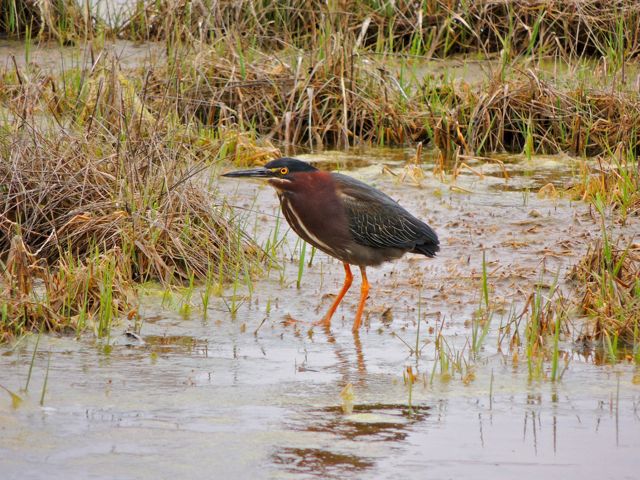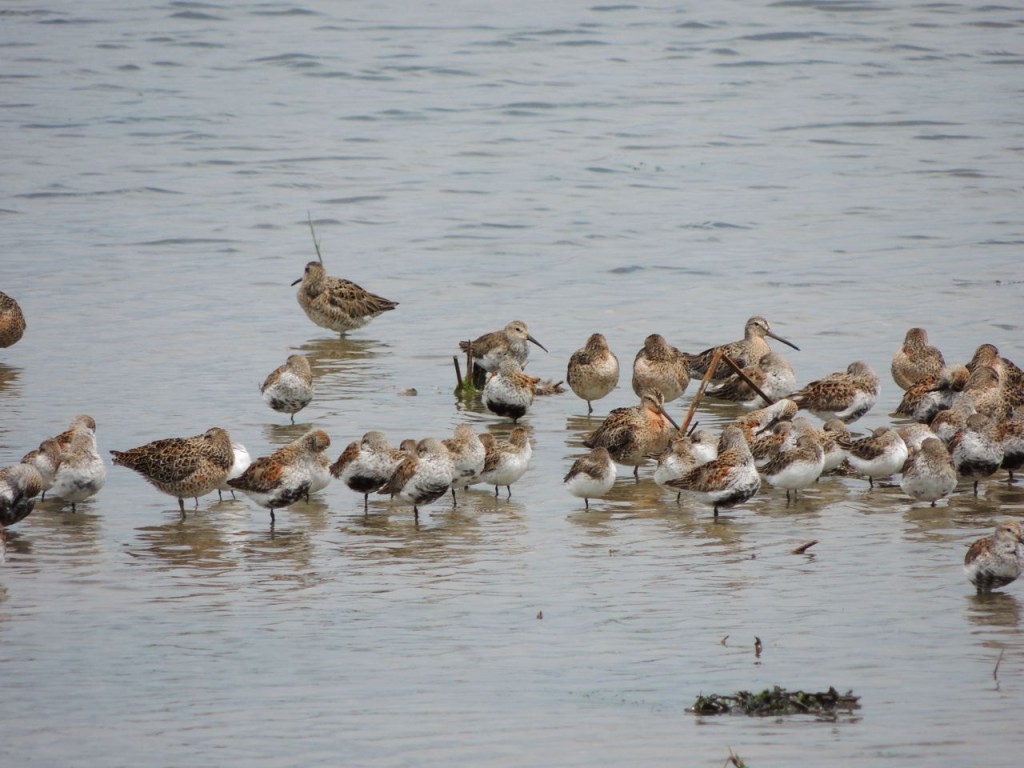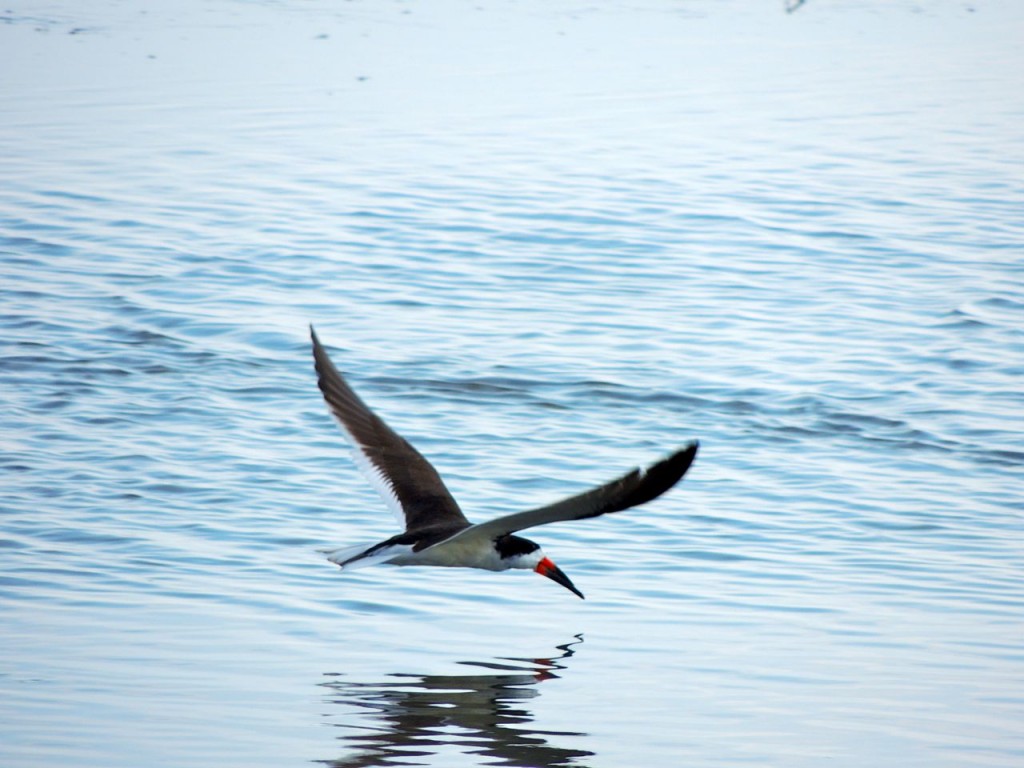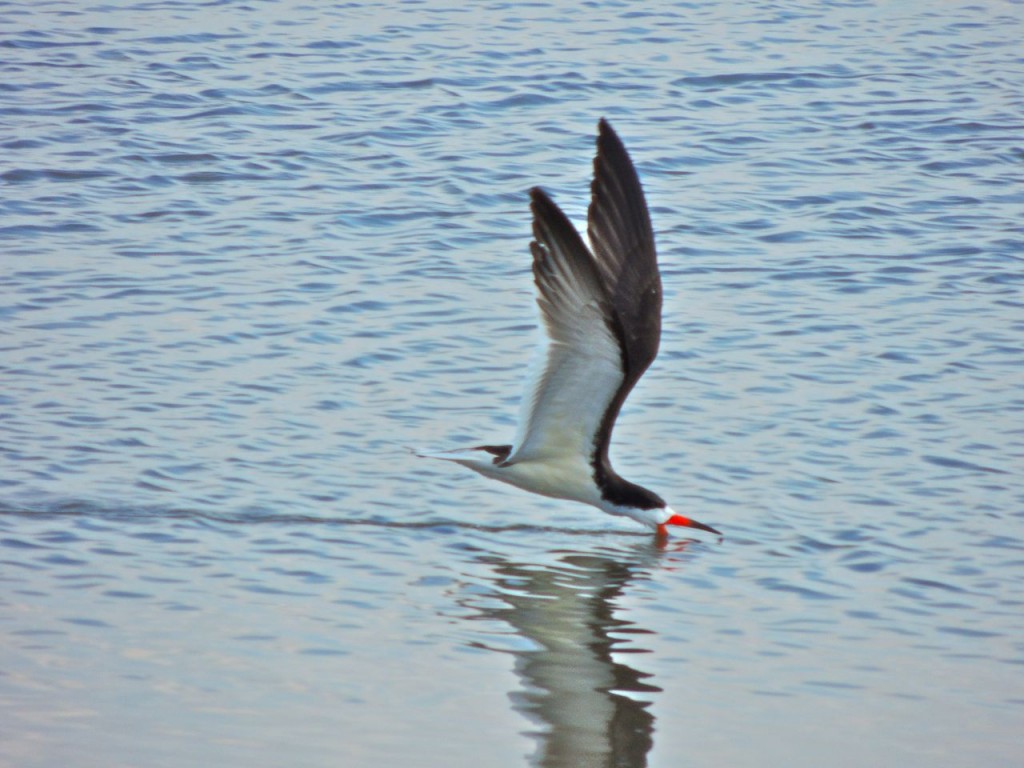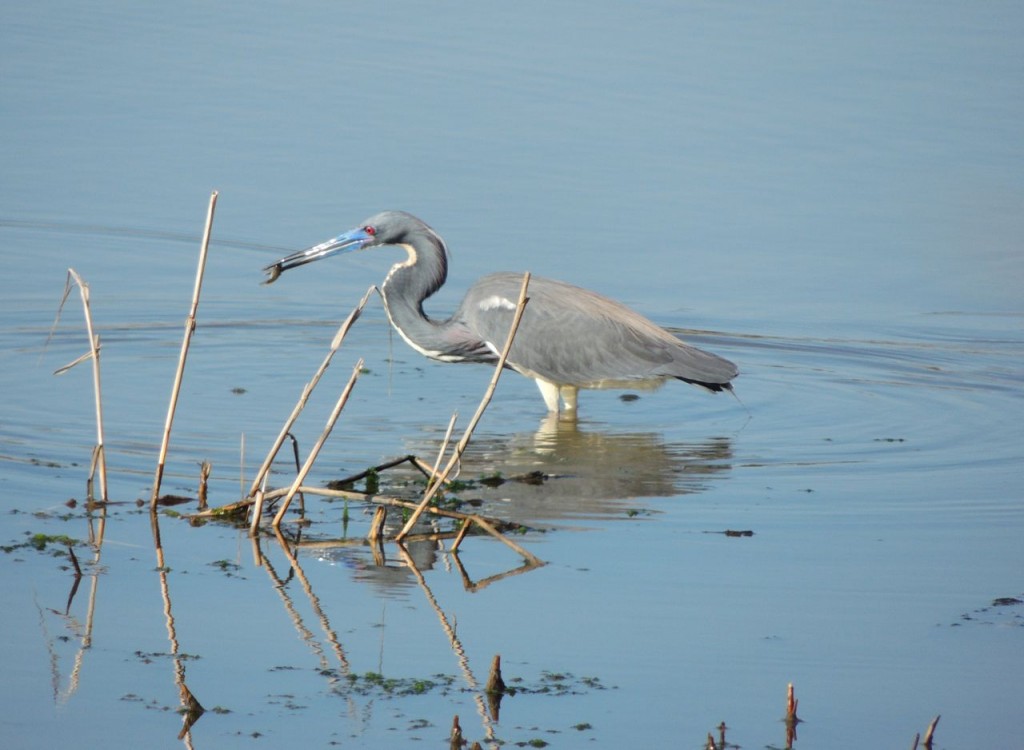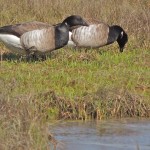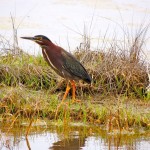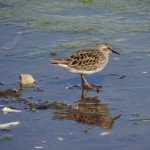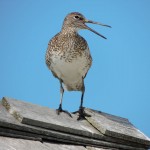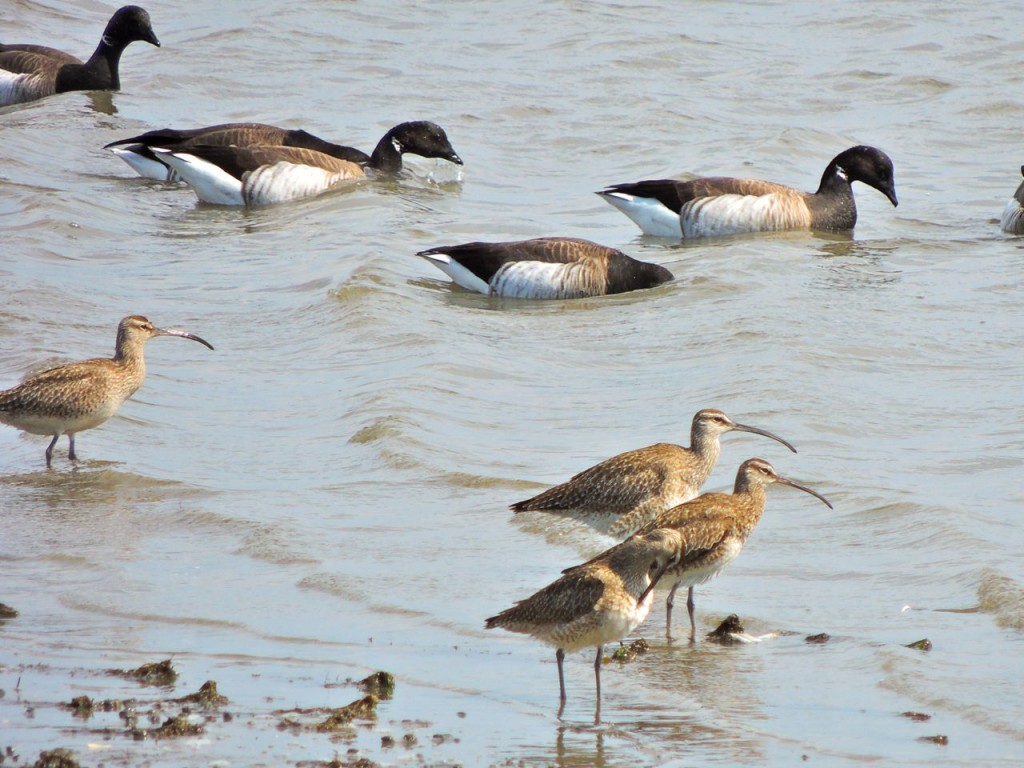May 8 2014 . Cootes Paradise Hamilton ON. Over the years I’ve kind of kept track of the date by when our deciduous trees are fully leafed and provide a full canopy. May 3rd, is an early date, May 13th a latest date. As of today all trees appear utterly bare, unless we get a sudden burst of warmth I think we’re going to set a record late date. This is good for finding migrant birds although the birds may not appreciate it so much.
Today after a morning volunteering at a plant sale, I walked out along a shoreline path just to see what’s about. My intent was to end up at a marsh boardwalk in hope of seeing or hearing a Virginia Rail; no such luck.
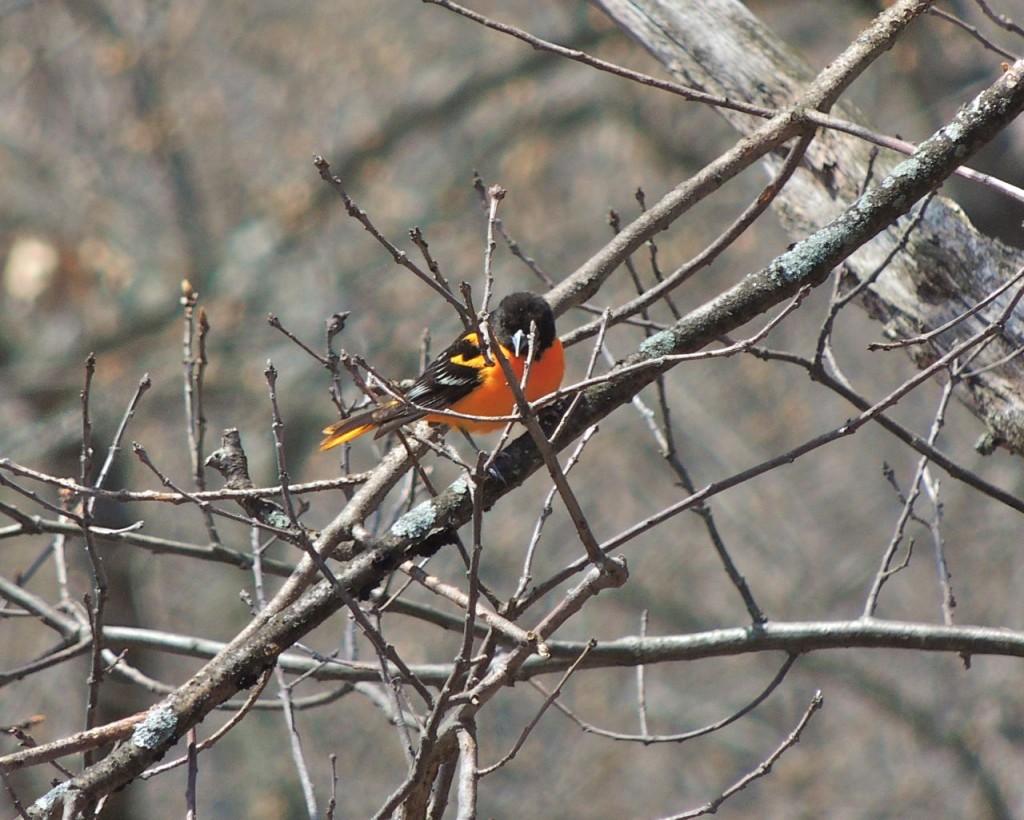
However the woods were happily thronged with Yellow-rumped Warblers and Baltimore Orioles. The first Baltimore Orioles of the year are always a welcome sight, after about a week they are so ubiquitous and so noisy that I almost wish they’d shut up for a minute. Today I loved them.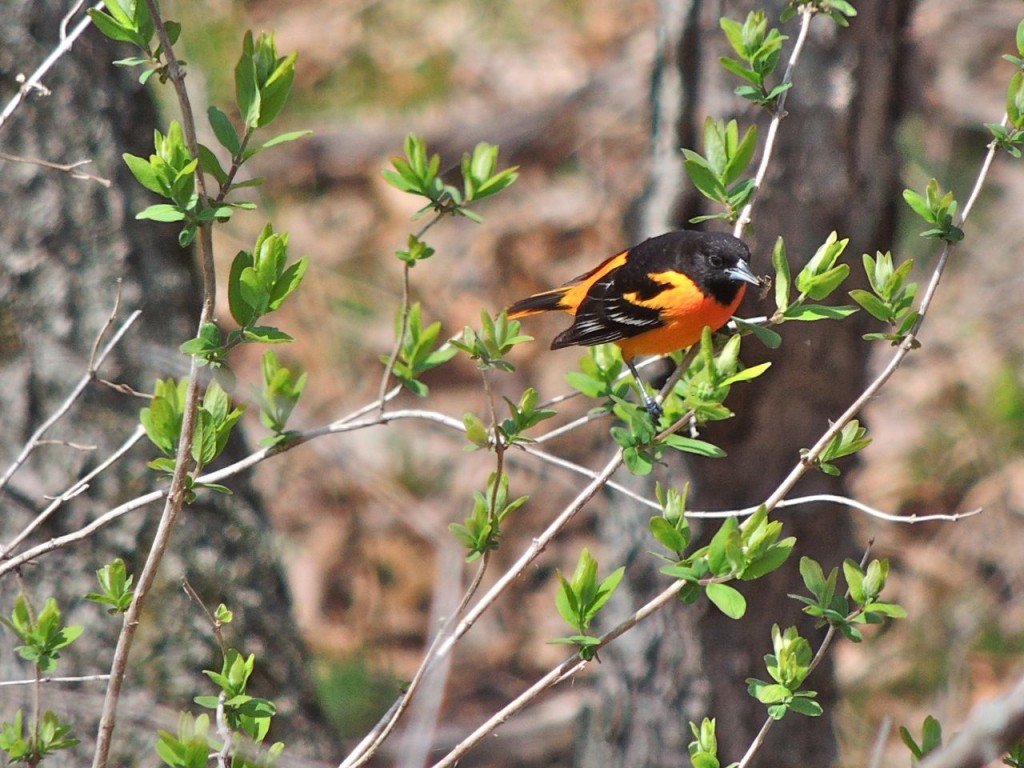
My Bird of the Day though was my first Warbling Vireo of the year heard and seen singing high in a Black Cherry tree. In marked contrast to the orioles the warbling Vireo is a drab bird, generally olive and dingy greenish-white. What it loses in flash it makes up for in its cheery uplifting summer song which I always thought impossible to describe until a friend came up with this, “If I sees you I will squeeze ya an I’ll squeeze ya til you hurt”, this rough approximation is best recited in the silence of your head rather than aloud and in public.
Much later today a companion and I enjoyed excellent views of an American Bittern, at first singing (if you can call it that) and then we watched as it launched itself up and out of the cattails and flew surprisingly swiftly to settle in another corner of the marsh. We were pretty pleased with ourselves for witnessing this and a little later on, almost as pleased to see a Great Horned Owl.
